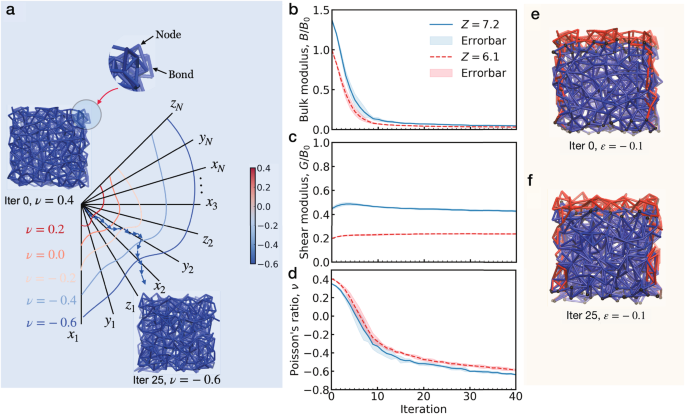2024-05-30 米国国立標準技術研究所(NIST)
<関連情報>
- https://www.nist.gov/news-events/news/2024/05/new-way-designing-auxetic-materials
- https://www.nature.com/articles/s41524-024-01281-y
密度を損なうことなく3次元的に等方的なオーセティックネットワーク構造を実験的に実現する自律的設計アルゴリズム An autonomous design algorithm to experimentally realize three-dimensionally isotropic auxetic network structures without compromising density
Meng Shen,Marcos A. Reyes-Martinez,Louise Ahure Powell,Mark A. Iadicola,Abhishek Sharma,Fabian Byléhn,Nidhi Pashine,Edwin P. Chan,Christopher L. Soles,Heinrich M. Jaeger & Juan J. de Pablo
NPJ Computational Materials Published:29 May 2024
DOI:https://doi.org/10.1038/s41524-024-01281-y

Abstract
Auxetic materials have a negative Poisson’s ratio and are of significant interest in applications that include impact mitigation, membrane separations and biomedical engineering. While there are numerous examples of structured materials that exhibit auxetic behavior, the examples of engineered auxetic structures is largely limited to periodic lattice structures that are limited to directional or anisotropic auxetic response. Structures that exhibit a three-dimensionally isotropic auxetic response have been, unfortunately, slow to evolve. Here we introduce an inverse design algorithm based on global node optimization to design three-dimensional auxetic metamaterial structures from disordered networks. After specifying the target Poisson’s ratio for a structure, an inverse design algorithm is used to adjust the positions of all nodes in a disordered network structure until the desired mechanical response is achieved. The proposed algorithm allows independent control of shear and bulk moduli, while preserving the density and connectivity of the networks. When the angle bending stiffness in the network is kept low, it is possible to realize optimized structures with a Poisson’s ratios as low as −0.6. During the optimization, the bulk modulus of these networks decreases by almost two orders of magnitude, but the shear modulus remains largely unaltered. The materials designed in this manner are fabricated by dual-material 3D-printing, and are found to exhibit the mechanical responses that were originally encoded in the computational design engine. The approach proposed here provides a materials-by-design platform that could be extended for engineering of optical, acoustic, and electrical properties, beyond the design of auxetic metamaterials.



